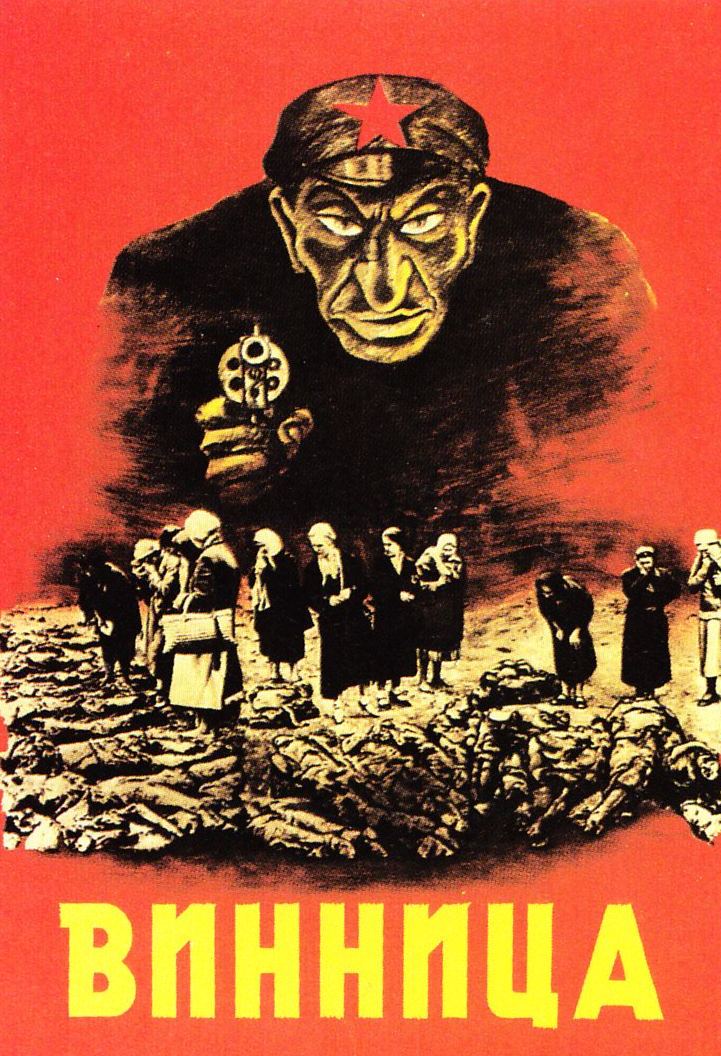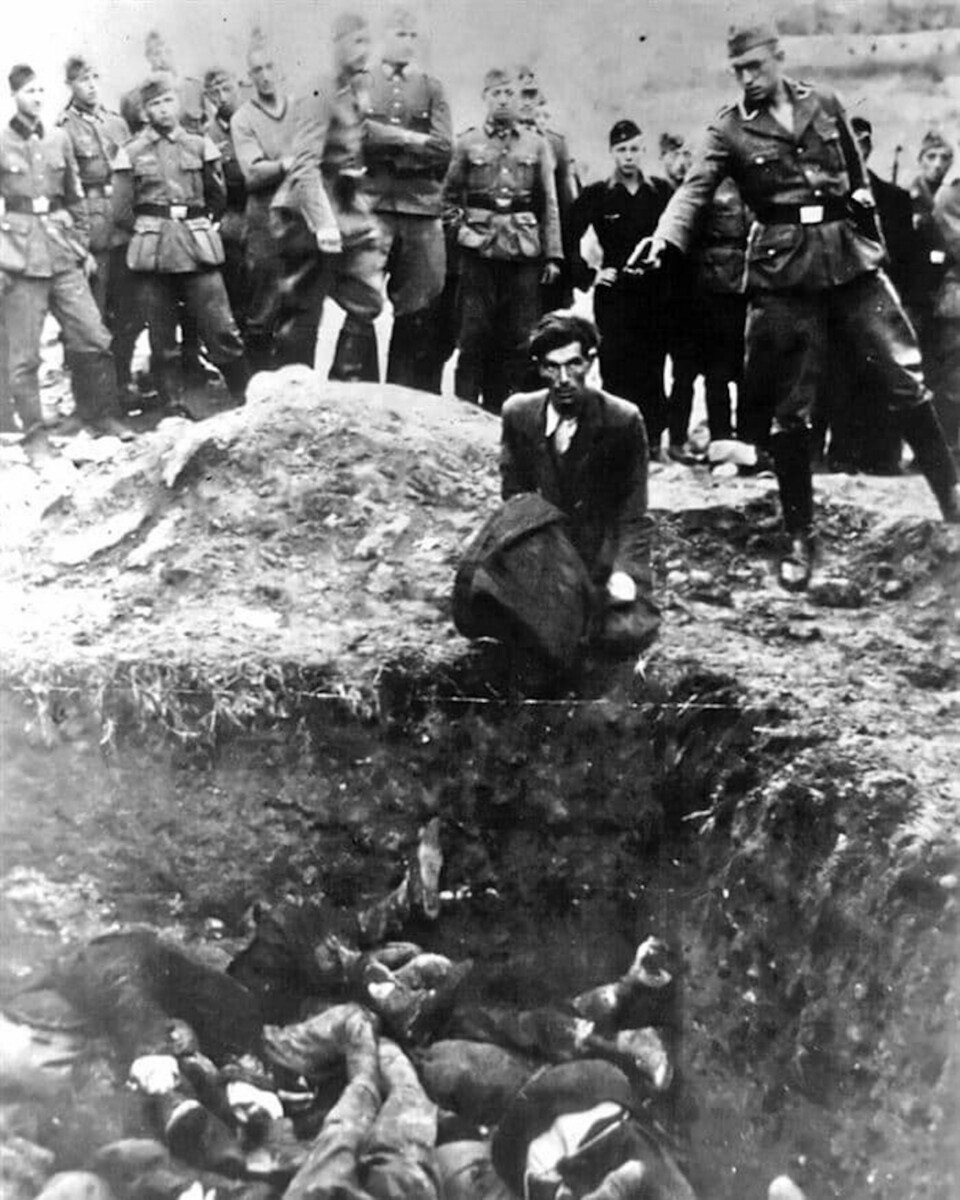Abstract
Inciting local populations to act against one another, or to unite
against a targeted enemy, remained a cornerstone of German propaganda in
the occupied territories. German forces and their propaganda also sought
to convince local populations that the Germans were there to help them
against the Bolshevik “menace,” and while such efforts certainly
invented no shortage of lies to this end, they were also eager to use
examples of real atrocities and crimes committed by their enemies. In
the Ukrainian village of Vinnitsa, the NKVD—Soviet Secret
Police—murdered between 9000 and 11,000 citizens in 1937 and 1938. The
mass graves of those murdered were discovered by the Germans in 1943,
and German propagandists used this episode to their advantage with
posters such as this one, which aimed to blame “Jewish Bolshevists” and
thereby have the Wehrmacht gain the trust of local citizens. Initially,
many Ukrainians believed the Germans would help them establish an
independent Ukraine, and a number of them collaborated directly with the
Nazis. The Nazis, however, planned to colonize all of Eastern Europe
according to their “Generalplan Ost.” As part of this plan, the Germans
had begun murdering Jews in the region immediately, and one of the most
famous photos of the Holocaust—that of the last Jew being executed by
the Einsatzgruppen—came from Vinnitsa.

